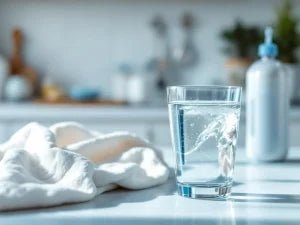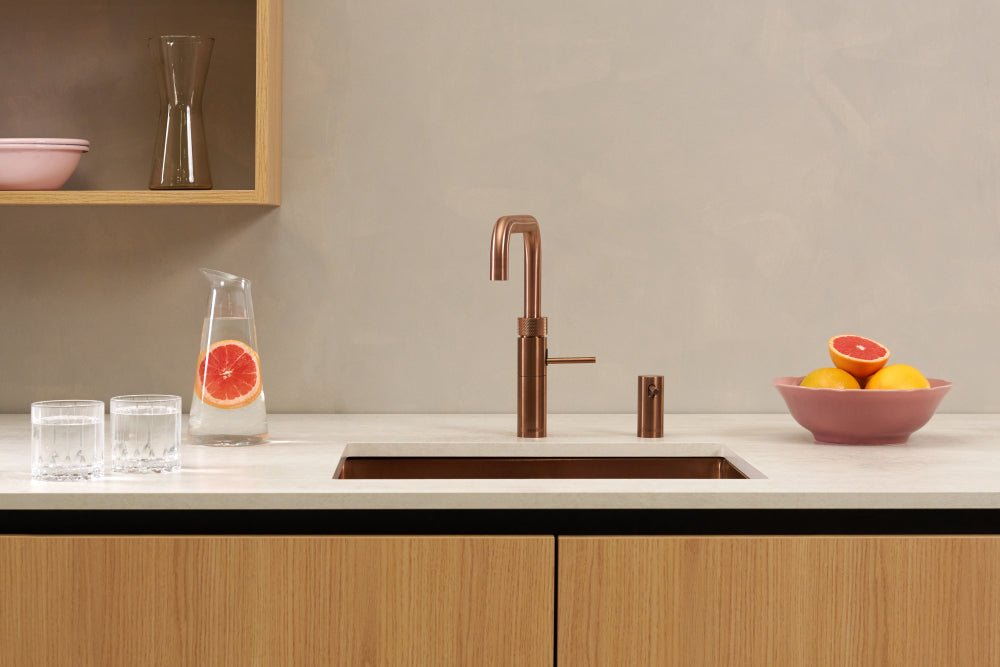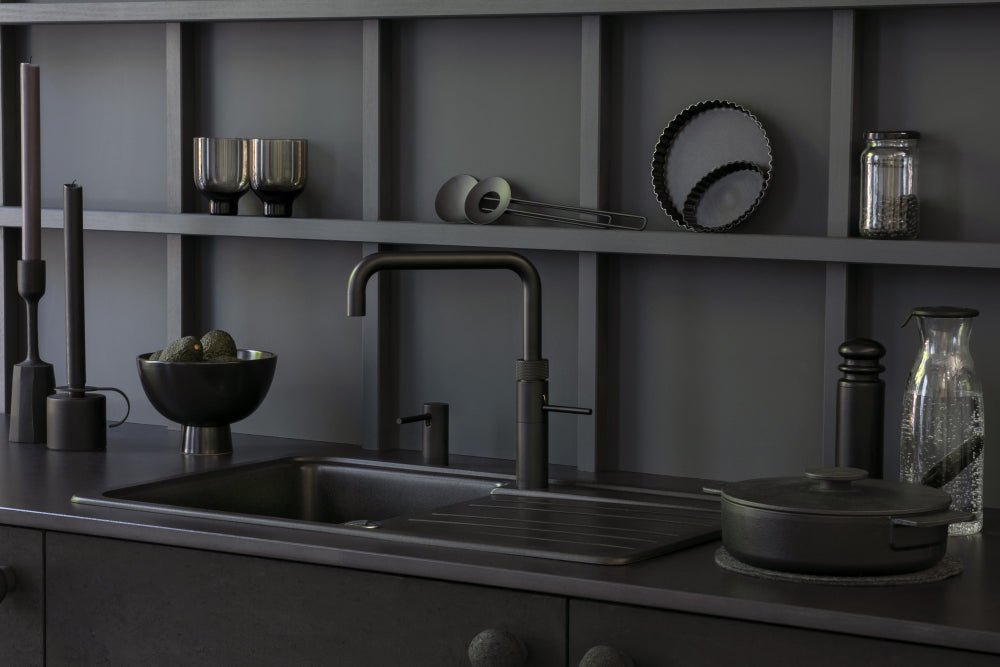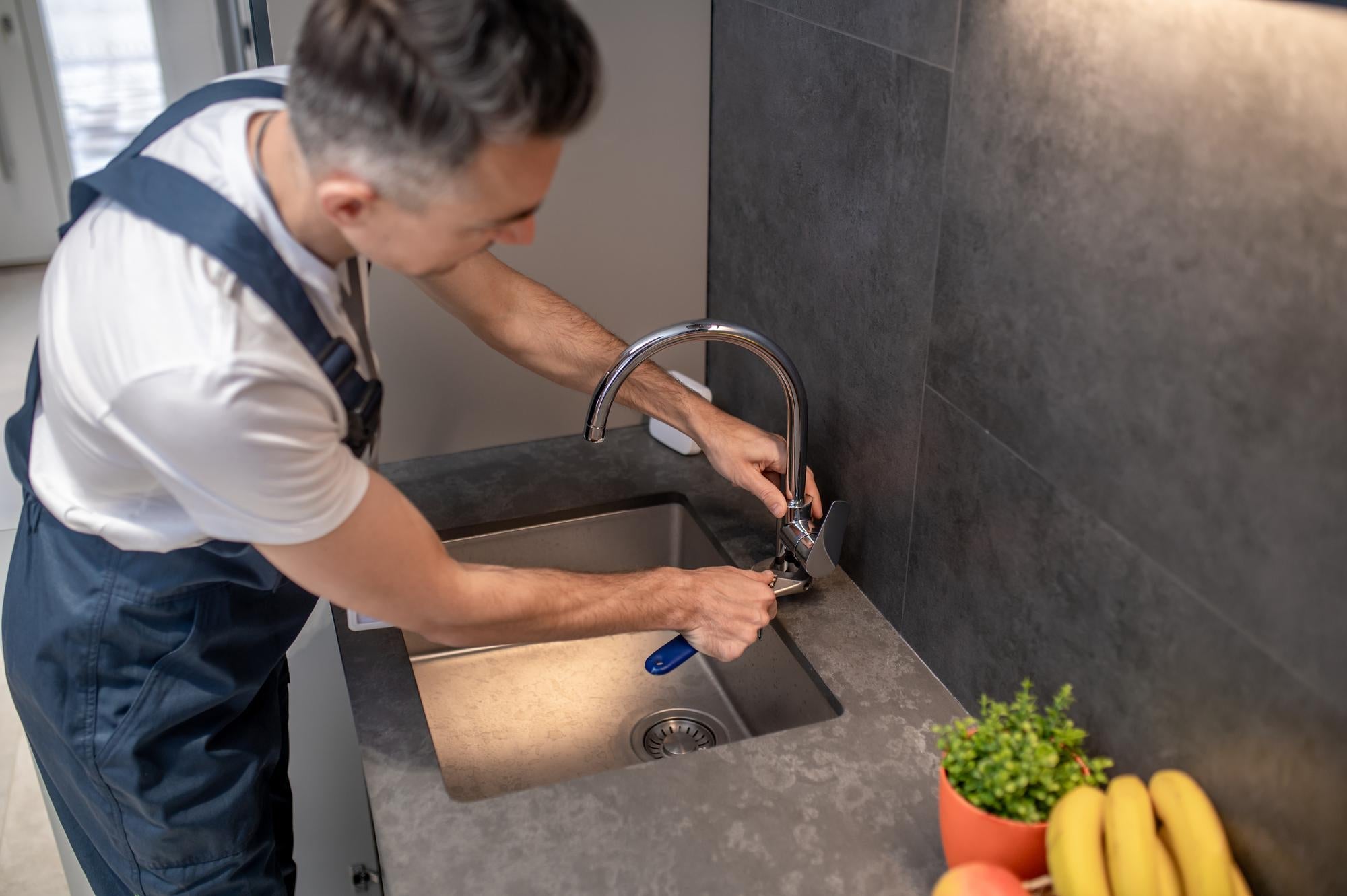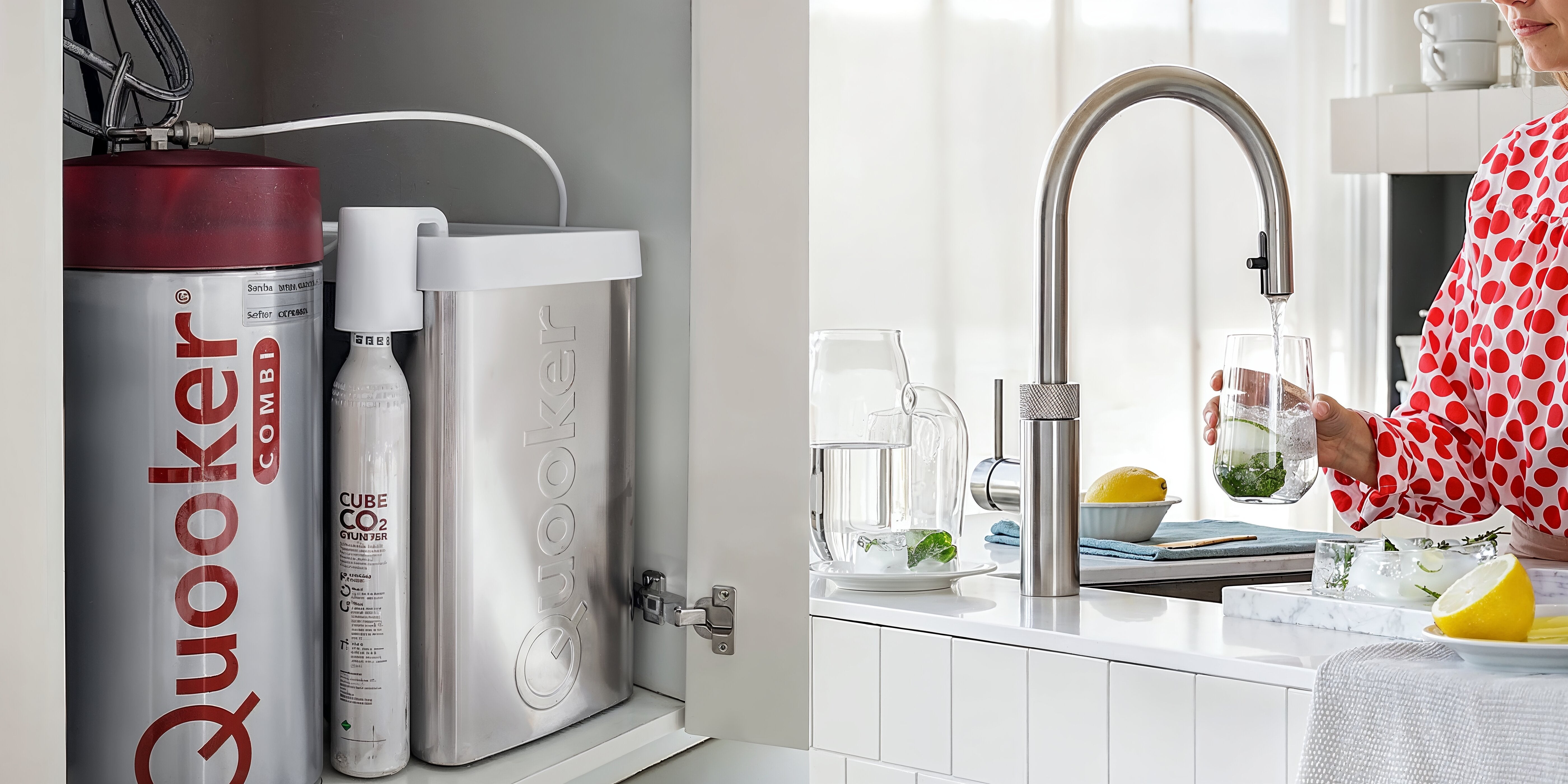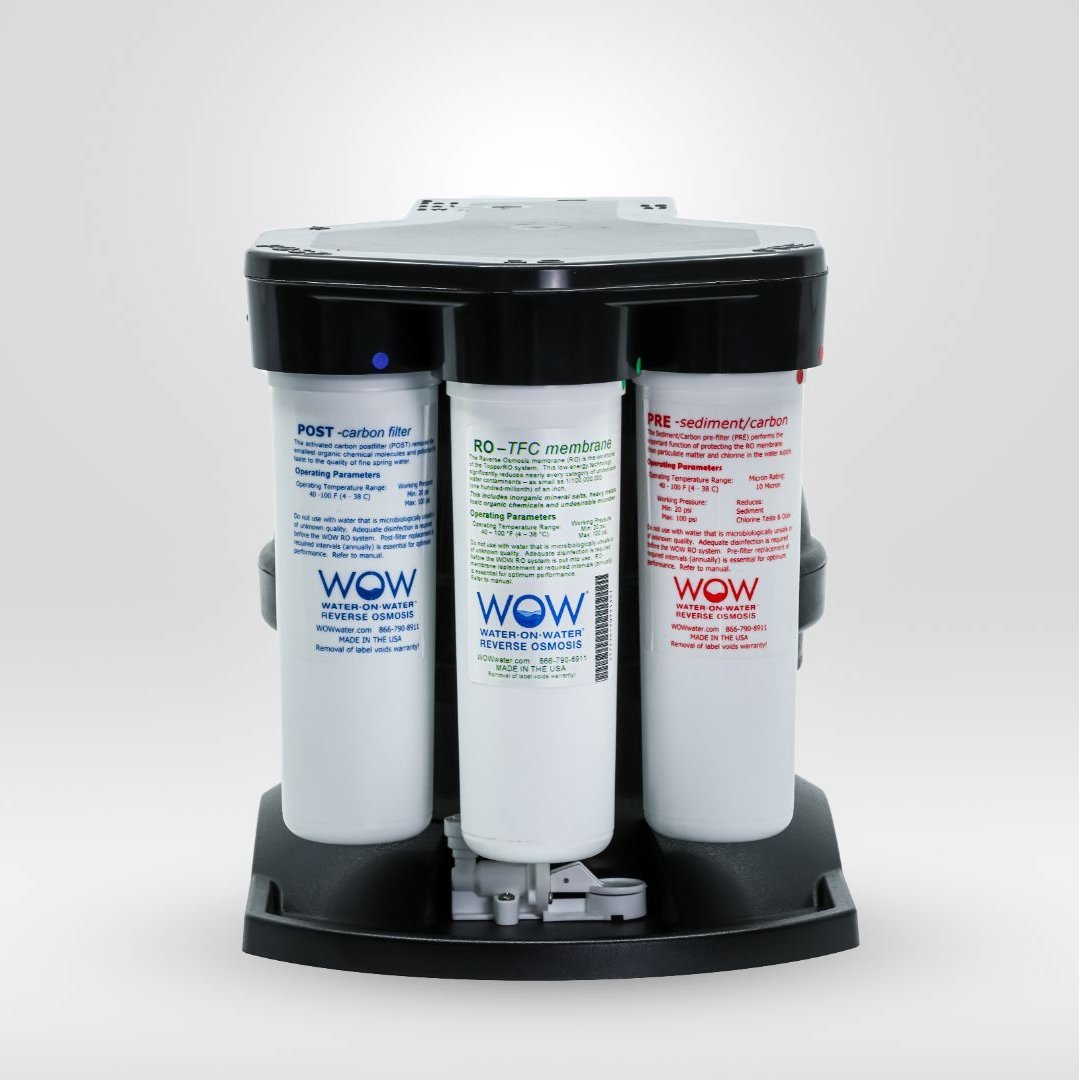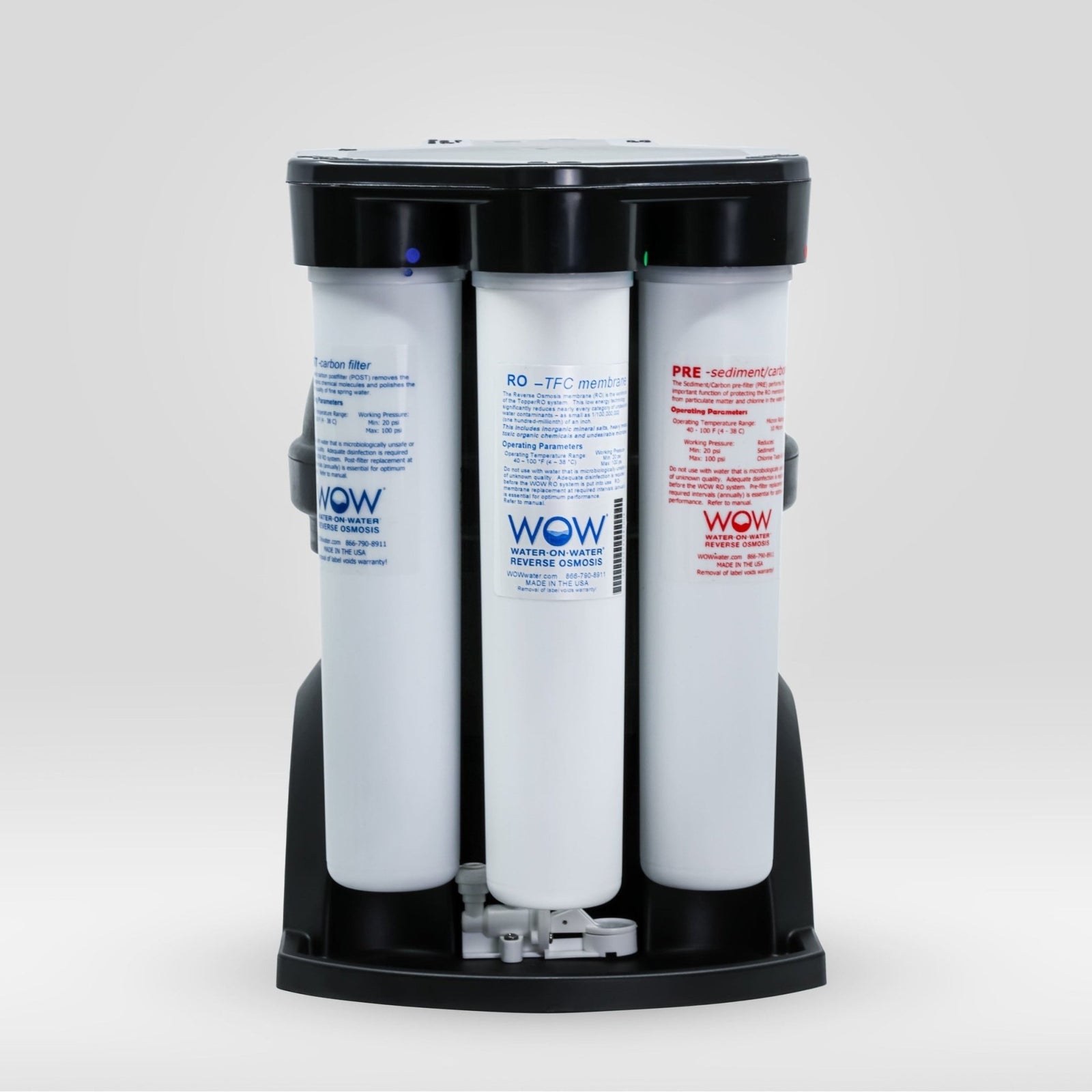Dutch tap water contains various chemicals that, although within legal limits, may cause concern for some people. Chemicals in tap water such as chlorine, pharmaceutical residues, pesticides, and heavy metals can be present in small concentrations. Although water companies maintain strict quality standards under the Drinking Water Act, more and more people are opting for additional water purification at home to have complete control over their drinking water quality.
What chemicals are actually in Dutch tap water?
Dutch tap water contains various chemicals that are added during the purification process or remain as residues. Chlorine, for example, is used for disinfection, while substances such as pharmaceutical residues, pesticides, nitrates, and heavy metals like lead can be present in very small quantities. Modern contaminants such as PFAS (poly- and perfluoroalkyl substances) and microplastics are also increasingly found.
Water companies must comply with strict limits established in the Drinking Water Act. This law sets maximum concentrations for more than 60 different substances. For example, chlorine has a maximum limit of 0.3 mg per liter, while lead has a limit of 10 micrograms per liter. Despite these strict standards, some substances such as pharmaceutical residues and hormone disruptors remain unregulated.
The composition of tap water varies by region, depending on the source (groundwater or surface water) and local environmental factors. In areas with intensive agriculture, higher concentrations of pesticides may be present, while pharmaceutical residues are more common in urban areas.
What are the health effects of chemicals in tap water?
The health effects of chemicals in tap water range from short-term symptoms to potential long-term risks. Acute effects such as gastrointestinal upset, headaches, or skin irritation can occur in sensitive individuals, especially when chlorine concentrations are temporarily elevated. Long-term exposure to certain substances, even within legal limits, can be a concern for some people.
Vulnerable groups deserve extra attention:
- Pregnant women: certain substances can affect the development of the fetus
- Babies and young children: their developing organs are more sensitive to chemicals
- People with a weakened immune system: they have less resistance to potential pathogens
- Elderly: Reduced kidney function can lead to accumulation of substances
Although Dutch drinking water quality is among the best in the world, caution is still advised. Endocrine disruptors and pharmaceutical residues can have biological effects even at very low concentrations. The cocktail effect, in which various substances reinforce each other, has not yet been sufficiently investigated.
How do I know what substances are in my tap water?
Water companies publish annual water quality reports that provide insight into the composition of tap water in your region. These reports are available online through your local water supplier's website and contain measurements for dozens of parameters. The most important parameters to check are hardness, pH, nitrate, lead, and the presence of pesticides.
For direct measurements at home, you can use TDS (Total Dissolved Solids) meters. These devices measure the total amount of dissolved solids in the water. A TDS value of 50-150 ppm is considered excellent, while values above 300 ppm may indicate elevated mineral or contaminant concentrations.
Interpretation of measured values requires some knowledge:
- pH value: ideally between 6.5 and 9.5
- Hardness: 8 °dH is considered average for the Netherlands
- Nitrate: maximum 50 mg/l according to EU standards
- Chlorine: usually around 0.1-0.2 mg/l
Regional differences are significant. Areas with hard water, such as South Limburg, have higher mineral concentrations, while coastal areas sometimes experience salinization. Cities with old pipes may exhibit elevated lead levels.
Why are more and more people choosing water filtration at home?
The growing demand for home water filter systems is driven by increasing concerns about pharmaceutical residues, microplastics, and emerging contaminants like PFAS. Consumers want more control over their water quality, especially since not all potentially harmful substances are regulated or tested by water companies.
The practical benefits of filtered water are immediately noticeable. The water tastes fresher and smoother, tea and coffee gain a richer flavor, and even flowers stay fresh longer in filtered water. For families with young children or people with health problems, home water purification offers additional peace of mind.
Economic considerations also play a role. A water filter system can be cheaper in the long run than buying bottled water, while also reducing the environmental impact of plastic waste. Modern systems are also user-friendly and require minimal maintenance.
How does reverse osmosis work in removing chemicals?
Reverse osmosis works by forcing pressurized water through a semi-permeable membrane. This membrane has pores so small that only water molecules can pass through, while virtually all dissolved substances are retained. The process removes up to 99% of contaminants, including heavy metals, pesticides, pharmaceutical residues, bacteria, and viruses.
The difference compared to conventional water filters is significant. While a standard carbon filter primarily removes chlorine and organic matter, reverse osmosis also eliminates inorganic compounds, salts, and microscopic particles. The system works in several steps: first, a sediment filter for coarse particles, then the RO membrane for ultrafine filtration, followed by a carbon filter for taste improvement.
| Filter method | Removes | Effectiveness |
|---|---|---|
| Carbon filter | Chlorine, organic substances | 70-80% |
| Reverse osmosis | All unwanted substances water | 95-99% |
| UV disinfection | Bacteria, viruses | 99.9% |
Certifications such as NSF/ANSI 58 guarantee that the system meets strict international standards for performance and safety. This standard specifically tests the removal of contaminants and the structural integrity of the system.
Is filtered water really healthier than tap water?
The question of whether filtered water is healthier than tap water depends on several factors. Dutch tap water meets strict standards and is safe to drink, but water filtration systems offer additional assurance by removing substances that are not yet regulated or occur in concentrations just below the legal limit.
For certain groups, water filtration offers clear health benefits:
- People with compromised immune systems benefit from extra protection against pathogens
- Families in areas with old pipes avoid exposure to lead
- People with sensitive skin experience less irritation from chlorinated water
- Athletes and health-conscious people appreciate the pure hydration
It's important to note that modern reverse osmosis systems like the ones we supply not only filter but also remineralize. After removing all the substances, essential minerals like calcium and magnesium are reintroduced, keeping the water not only safe but also healthy.
The choice of home water filtration ultimately comes down to personal preference and circumstances. For those seeking absolute tap water safety , wanting extra control over water quality, or simply wanting to improve the taste, modern filtration systems offer a reliable solution. With proven technology like reverse osmosis, you bring spring water quality into your home, so you can enjoy every glass of water with peace of mind.
